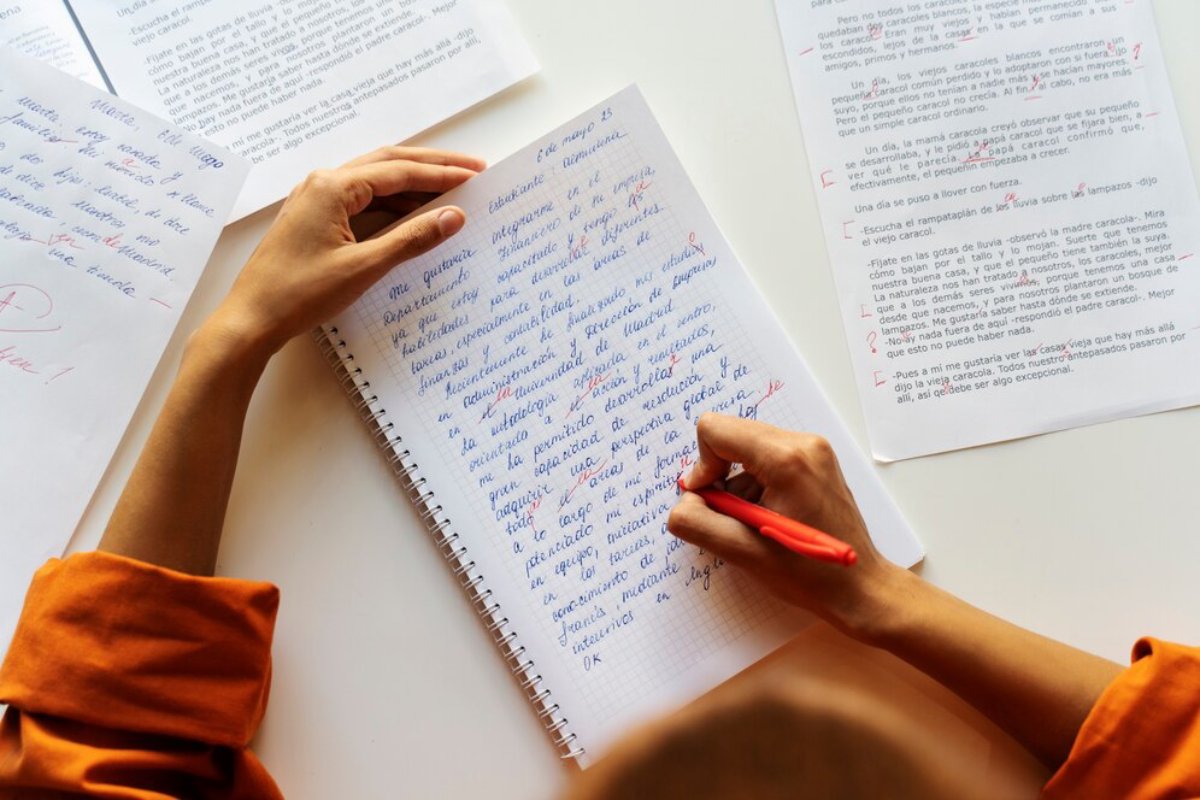The Education Blog

The Science of Language Acquisition: How to Learn Faster
Learning a new language is complex but very rewarding. It requires memory, cognitive skills, and exposure to new grammar and vocabulary. Understanding how we learn languages can be tough, but it can help you create better learning strategies.
In this guide, you’ll learn how the brain learns new languages. You’ll discover effective ways to boost fluency. Also, you’ll get practical tips to enhance retention and understanding.
How the Brain Learns a New Language
1. The Role of Neuroplasticity
Language learning relies on neuroplasticity, the brain’s ability to form and reorganise connections. When you learn a new language, new neural pathways are created, strengthening with repeated exposure and practice.
Key Brain Regions Involved:
- Broca’s area: Responsible for speech production and grammar.
- Wernicke’s area: Handles language comprehension and meaning.
- Hippocampus: Stores and retrieves new vocabulary.
Tip: Consistent exposure to a new language helps reinforce these neural connections, improving fluency over time.
2. Memory and Language Retention
Language acquisition heavily relies on short-term and long-term memory.
- Short-term memory: Stores new words and phrases temporarily.
- Long-term memory: Through repetition and spaced practice, new vocabulary is transferred into long-term memory.
How to Enhance Memory Retention:
- Use mnemonics: Create memory aids to associate new words with familiar concepts.
- Spaced repetition: Regularly review vocabulary over increasing intervals to strengthen recall.
Tip: Language apps like Anki and Memrise use spaced repetition algorithms to boost retention.
3. Cognitive Load and Multitasking
When you learn a new language, your brain handles grammar, vocabulary, and pronunciation all at once. This raises your cognitive load.
- High cognitive load: Learning too much at once reduces retention.
- Optimised learning: Focus on small, manageable language chunks for better absorption.
Tip: Instead of cramming, aim for short, frequent learning sessions (e.g., 30 minutes daily) to reduce cognitive overload.

Proven Strategies to Learn Languages Faster
1. Immersive Language Learning
Immersion is one of the most effective ways to acquire a new language quickly. It forces your brain to process the language in real-time, just like native speakers.
Immersion Techniques:
- Watch movies and TV shows in the target language with subtitles.
- Listen to podcasts and music to develop comprehension skills.
- Engage in language exchanges with native speakers.
- Change your phone or social media language settings.
Tip: The more you use real-life language, the quicker you’ll improve your understanding and fluency.
2. Leverage Spaced Repetition and Active Recall
Spaced repetition systems (SRS) let you review language content at the best times. This helps stop memory decay.
Active Recall Techniques:
- Use flashcards to regularly test yourself on vocabulary and phrases.
- Write sentences using new words to reinforce contextual usage.
- Practice self-quizzing to enhance long-term retention.
Tip: Apps like Quizlet, Anki, and Clozemaster offer SRS features for language learners.
3. Use the Chunking Technique for Phrases
Instead of memorising individual words, learn entire phrases or sentence structures. This technique improves fluency and helps you speak naturally.
Chunking Tips:
- Learn common conversational phrases rather than isolated vocabulary.
- Practice using collocations (frequently paired words) together.
- Use pre-built dialogue scripts to practice natural sentence patterns.
Instead of learning “bread” and “butter” on their own, try to remember the phrase “bread and butter” together.
4. Speak from Day One
Actively speaking from the beginning improves pronunciation, confidence, and fluency.
Tips to Start Speaking Early:
- Use language exchange platforms like Tandem or HelloTalk to converse with native speakers.
- Join online conversation groups or language meetups.
- Don’t fear making mistakes—focus on communication over perfection.
Tip: Consistent speaking practice reduces language anxiety and boosts fluency.
5. Mimic Native Pronunciation with Shadowing
Shadowing is a method where you listen and repeat speech at the same time. This helps you improve your pronunciation, intonation, and fluency.
How to Practice Shadowing:
- Choose an audio recording or podcast in your target language.
- Listen to short segments and repeat word-for-word.
- Focus on mimicking rhythm, tone, and pronunciation.
Tip: Use language learning platforms like Speechling or FluentU for guided shadowing exercises.
Enhancing Language Comprehension Skills
1. Improve Listening with Active Engagement
Listening comprehension is a vital skill for fluency. Active listening boosts vocabulary recognition and language patterns.
Tips for Better Listening:
- Listen to audiobooks or podcasts at different speeds to improve comprehension.
- Practice transcribing short audio clips.
- Use dual subtitles (native and target language) for context.
Tip: Gradually increase the speed and complexity of listening materials as your skills improve.
2. Read Extensively in the Target Language
Reading exposes you to new vocabulary, sentence structures, and cultural expressions.
Effective Reading Strategies:
- Read bilingual books to see direct translations.
- Use graded readers for beginner and intermediate learners.
- Highlight and note down unfamiliar words for review.
Tip: Apps like LingQ and Beelinguapp offer bilingual reading materials.
3. Improve Writing Through Daily Practice
Writing enhances grammar accuracy, vocabulary recall, and sentence structure.

Tips for Writing Practice:
- Keep a language journal to write daily entries.
- Use language correction tools (e.g., Grammarly for English, LangCorrect for multilingual feedback).
- Write dialogues or short essays using new vocabulary.
Tip: Join online language forums to share your writing and receive feedback.
Practical Tips for Long-Term Language Retention
1. Create a Language Learning Routine:
- Dedicate at least 30-60 minutes daily to language practice.
- Divide your time between speaking, listening, reading, and writing.
- Use a language planner or app to track your progress.
2. Use Multisensory Learning Methods:
Engaging multiple senses reinforces memory.
- Write, read, and listen to the same content.
- Use gestures and visuals when practising vocabulary.
3. Consistent Exposure and Review:
- Watch or read news, articles, or shows in your target language.
- Review previous lessons regularly to strengthen recall.
- Join language communities for continuous practice.
Accelerate Language Learning
To learn a new language quickly, use proven methods like immersion, spaced repetition, and speaking actively. When you know how your brain handles language, you can improve your learning methods. This helps you remember better and speak more fluently.
To master any language, whether for conversation or fluency, practice regularly. Also, expose yourself to the language and use effective techniques.









